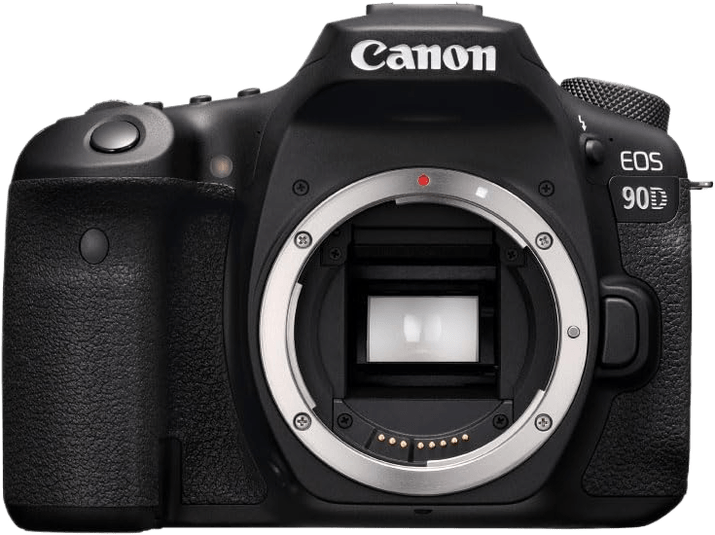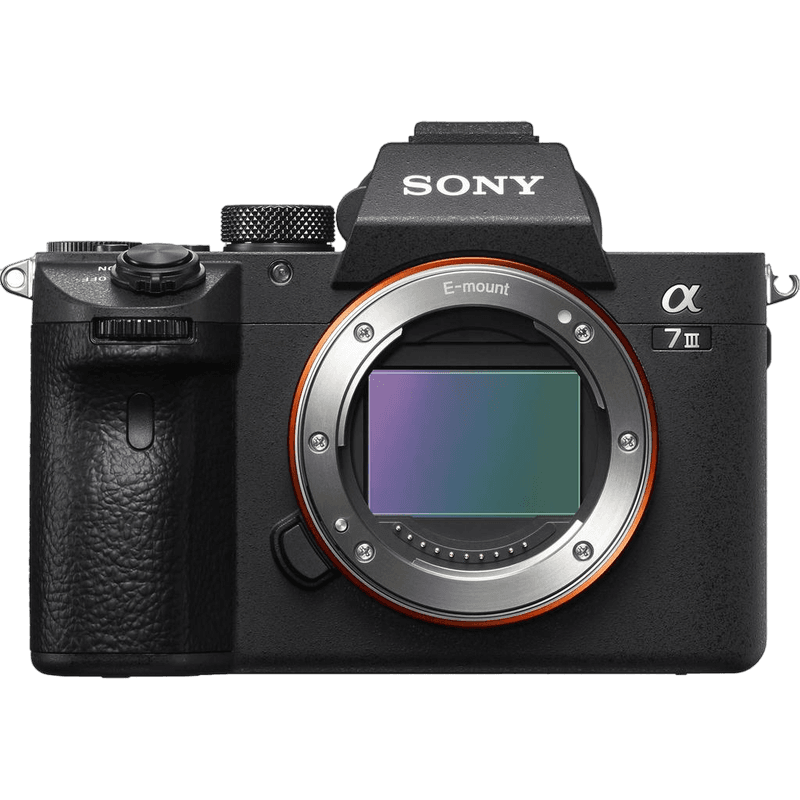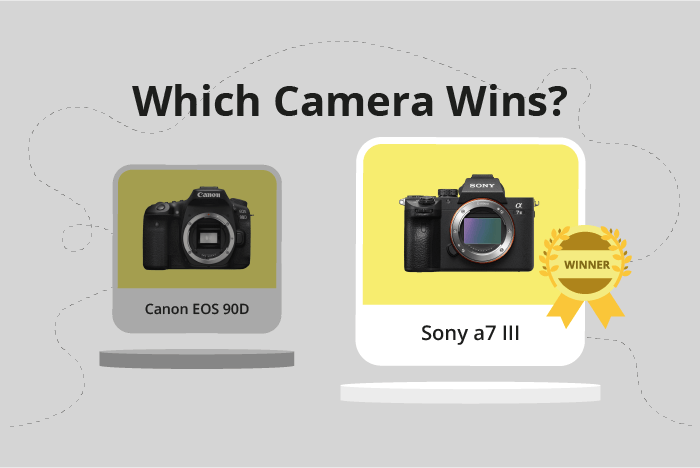Canon EOS 90D vs Sony a7 III Comparison
Canon EOS 90D

Sony a7 III

The Sony a7 III outperforms the Canon EOS 90D with a score of 81 compared to 67/100. Both cameras, released in 2018 and 2019 respectively, share similar specifications, such as their launch prices, $2000 for the Sony and $1199 for the Canon. They also have similar sizes, with the Canon measuring 141 x 105 x 77mm and weighing 701g, and the Sony measuring 127 x 96 x 74mm and weighing 650g.
The Sony a7 III’s higher score is due to its mirrorless technology, which provides superior image quality and performance. Additionally, its lighter weight makes it more portable and convenient for photographers.
However, the Canon EOS 90D, being a DSLR, has its own advantages, such as a more affordable price and a wider selection of lenses. This makes it a suitable option for those on a budget or looking to expand their lens collection.
Considering the specifications and scores, the Sony a7 III is the better choice for those seeking top-notch image quality and performance, while the Canon EOS 90D is a viable option for budget-conscious photographers and DSLR enthusiasts.
Canon EOS 90D vs Sony a7 III Overview and Optics
The Sony a7 III outperforms the Canon EOS 90D in optics with a score of 81/100, compared to the Canon’s 62/100. Both cameras share common specifications such as a CMOS sensor, 10 fps shooting speed, and lens mounts compatible with their respective brands.
The Sony a7 III excels with its full-frame sensor, which provides a larger surface area for capturing light and results in better image quality. Its DXOMARK sensor score of 96 is significantly higher than the Canon EOS 90D’s score of 58, indicating superior sensor performance. Additionally, the Sony a7 III features image stabilization, reducing the risk of blurry images due to camera shake.
On the other hand, the Canon EOS 90D has a higher megapixel count at 33, compared to the Sony a7 III’s 24.2 megapixels. This allows the Canon to capture more detail in images, which can be beneficial for large prints or heavy cropping. However, the Canon’s APS-C sensor is smaller than the Sony’s full-frame sensor, which may limit its low-light performance and dynamic range.
While the Canon EOS 90D offers more megapixels, the Sony a7 III’s full-frame sensor, higher DXOMARK score, and image stabilization make it the superior choice for optics. The Canon EOS 90D may be suitable for those who prioritize high-resolution images, but the Sony a7 III provides better overall image quality and performance.
Canon EOS 90D vs Sony a7 III Video Performance
The Canon EOS 90D emerges as the clear winner in video capabilities, scoring 91/100 compared to the Sony a7 III’s 70. Both cameras share some common specifications, such as a maximum video resolution of 4K and video dimensions of 3840 x 2160. However, the differences in their scores reveal the superior video performance of the Canon EOS 90D.
One of the primary advantages of the Canon EOS 90D is its higher maximum video frame rate of 120fps, which is significantly greater than the Sony a7 III’s 30fps. This allows the Canon EOS 90D to capture smoother and more detailed slow-motion footage, making it ideal for videographers seeking versatility and precision.
On the other hand, the Sony a7 III still offers solid video performance, sharing the same 4K resolution and video dimensions as the Canon EOS 90D. While it may not excel in frame rate or time-lapse capabilities, the Sony a7 III remains a reliable option for those seeking high-quality video output.
Taking these factors into account, the Canon EOS 90D outshines the Sony a7 III in terms of video capabilities, thanks to its higher frame rate and built-in time-lapse functionality. While the Sony a7 III still delivers respectable performance, the Canon EOS 90D provides greater versatility and creative potential for videographers looking to push the boundaries of their craft.
Canon EOS 90D vs Sony a7 III Features and Benefits
The Canon EOS 90D takes the lead in features with a score of 83/100, while the Sony a7 III trails closely with a score of 81/100. Both cameras share several specifications, such as a 3-inch screen size, touchscreen functionality, flip screens, and the absence of GPS. Additionally, both models come equipped with WIFI and Bluetooth capabilities.
The Canon EOS 90D stands out with its higher screen resolution of 1,040,000 dots, compared to the Sony a7 III’s 921,600 dots. This difference means that the EOS 90D’s screen displays sharper and clearer images, making it easier for users to review their shots and navigate the camera’s settings.
Despite its slightly lower feature score, the Sony a7 III remains a strong competitor. Both cameras have similar specifications, and the 2-point difference in the score does not significantly impact the overall performance of the Sony a7 III. In some aspects, user preferences and specific needs may determine which camera is better suited for them.
When comparing the Canon EOS 90D and the Sony a7 III, it is important to consider individual requirements and preferences alongside the feature scores. The EOS 90D holds a slight advantage with its higher screen resolution, but the similar specifications of both cameras make them strong contenders in the market. Users should weigh the importance of screen resolution against other factors, such as price and compatibility with existing equipment, before making a final decision.
Canon EOS 90D vs Sony a7 III Storage and Battery
The Sony a7 III outperforms the Canon EOS 90D in storage and battery with a score of 81, compared to the Canon’s 48/100. Both cameras accept SD, SDHC, and SDXC memory cards, but the Sony a7 III also supports Memory Stick Duo, Pro Duo, and Pro-HG Duo cards. Furthermore, the Sony a7 III has two memory card slots, while the Canon EOS 90D only has one.
The Canon EOS 90D has a longer battery life, providing 1300 shots with its LP-E6N battery, whereas the Sony a7 III’s NP-FZ100 battery lasts for 750 shots.
Despite its shorter battery life, the Sony a7 III’s additional memory card slot and compatibility with various memory card types make it the superior choice for storage and battery. On the other hand, the Canon EOS 90D’s longer battery life is advantageous for extended shooting sessions. Ultimately, the Sony a7 III’s versatility and storage capabilities give it the edge in this comparison.
Alternatives to the Canon EOS 90D and Sony a7 III
Are you still undecided about which camera is right for you? Have a look at these popular comparisons that feature the Canon EOS 90D or the Sony a7 III:

